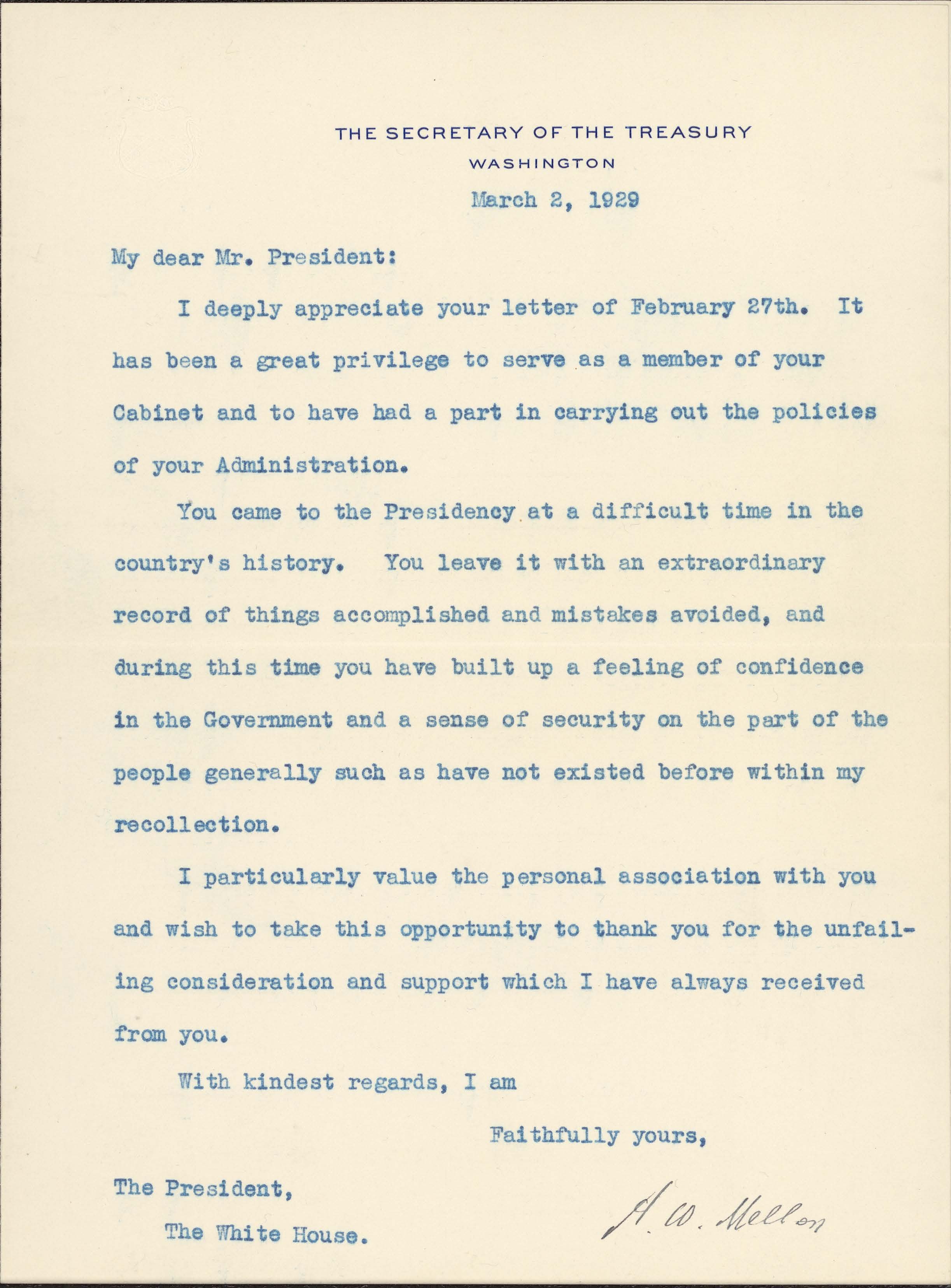“I particularly value the personal association with you”
Coolidge’s Treasury Secretary writes him two days before he leaves office: March 2, 1929.
Mellon had held the same post in the administration of Warren Harding. He would continue at Treasury under President Herbert Hoover after Coolidge. Nonetheless, it was Coolidge with whom Mellon worked most closely. The pair were both silent men, and it was said "they conversed in pauses."
The background for the joint Coolidge-Mellon effort was the severe recession and unemployment of the early 1920s. Harding wagered that if the government cut taxes and reduced the size of government, the economy would find its footing.
But Harding passed away in 1923, leaving it to Coolidge—and Mellon—to steward the hardest work of the cutting campaign. Together the pair crafted both the arguments for and the details of multiple new tax cuts—and saw the cuts into law.
Coolidge, for his part, matched Mellon's rate cuts with cuts to the federal budget. In his 1925 inaugural address, Coolidge explained the reasons for the project: “Every dollar that we carelessly waste means that their life will be so much the more meager. Every dollar that we prudently save means that their life will be so much the more abundant. Economy is idealism in its most practical form.”
The wager of the great cut campaign paid off in historic fashion. Under lower rates, and smaller government, business didn't merely find its footing. It expanded, and unemployment dropped. Workers benefitted dramatically: the productivity gains enabled employers to cut the work week to five days from the traditional six-day week. The fast growth of the economy earned the decade its nickname: "The Roaring Twenties."
Mellon's letter reflects his appreciation of his ally Coolidge and their stunning policy success.

